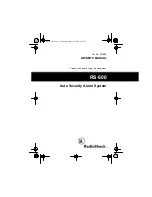
20 P/N 466-5307
• REV A • ISS 15MAR17 ©2017 United Technologies
Corporation
SYMPTOMS OF CO POISONING
Initial carbon monoxide poisoning symptoms are similar to the flu with no fever and can
include dizziness, severe headaches, nausea, vomiting and disorientation. Everyone is
susceptible but experts agree that unborn babies, pregnant women, senior citizens and
people with heart or respiratory problems are especially vulnerable. If symptoms of
carbon monoxide poisoning are experienced seek medical attention immediately. CO
poisoning can be determined by a carboxyhemoglobin test.
The following symptoms are related to CARBON MONOXIDE POISONING and should
be discussed with ALL members of the household:
1.
Mild Exposure
: Slight headache, nausea, vomiting, fatigue (often described as
“Flu-like” symptoms).
2.
Medium Exposure
: Severe throbbing headache, drowsiness, confusion, fast heart
rate.
3.
Extreme Exposure
: Unconsciousness, convulsions, cardio respiratory failure and
death.
The above levels of exposure relate to healthy adults. Levels differ for those at high
risk. Exposure to high levels of carbon monoxide can be fatal or cause permanent
damage and disabilities. Many cases of reported carbon monoxide poisoning indicate
that while victims are aware they are not feeling well, they become so disoriented they
are unable to save themselves by either exiting the building, or calling for assistance.
Also, young children and household pets may be the first affected. Familiarization with
the effects of each level is important.
Cleaning Your Detector
YOUR DETECTOR SHOULD BE CLEANED AT LEAST ONCE A YEAR
You can clean the detector by using a vacuum cleaner hose and vacuuming through
the openings around the perimeter of the detector. The outside of the detector can be
wiped with a damp cloth. Use only water to dampen the cloth, use of detergents or
cleaners could damage the detector.
If the detector is in fault mode and the RED LED is blinking a fault code of 10 flashes
(after a Test/Hush button push), the detector may be in need of cleaning. After
cleaning, press the Test/Hush button. If the fault does not clear, the alarm needs to be
replaced.
• Never use detergent or other solvents to clean the detector.
• Avoid spraying air freshener, hair spray, or other aerosols near the detector.
• Do not paint the detector. Paint will seal the vents and interfere with the sensor’s
ability to detect smoke and CO.







































